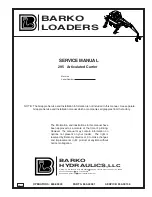
Tel: 886.2.2175 2930 Email: [email protected]
www.salukitec.com
55
6
Application Examples
This chapter unfolds a further description on main features of the oscilloscope by giving eleven simplified application
examples for reference to help solve your own test problems.
1.
Taking simple measurements
Using AUTOSET
Using the Measure menu to take auto measurements
2.
Taking cursor measurements
Measuring ring frequency and ring amplitude
Measuring pulse width
Measuring rise time
3.
Analyzing input signals to eliminate random noise
Observing a noisy signal
Eliminating random noise
4.
Capturing a single-shot signal
5.
Using X-Y mode
6.
Triggering on a pulse width
7.
Triggering on a video signal
Observing triggers on video fields and video lines
8.
Using Slope Trigger to capture a particular slope signal
9.
Using Overtime Trigger to measure a long pulse signal
10.
Using math functions to analyze waveforms
11.
Measuring data propagation delay
6.1
Example 1: Taking Simple Measurements
When you want to observe an unknown signal in a certain circuit without having its amplitude and frequency
parameters, you may use this function to take a fast measurement on the frequency, period and peak-to-peak
amplitude of the signal.
Follow the steps below.
1.
Set the switch on the oscilloscope probe to 10X;
2.
Push the CH1 MENU button and set the Probe option attenuation to 10X;
3.
Connect the CH1 probe to the test point of the circuit;
4.
Press the AUTOSET button.
















































